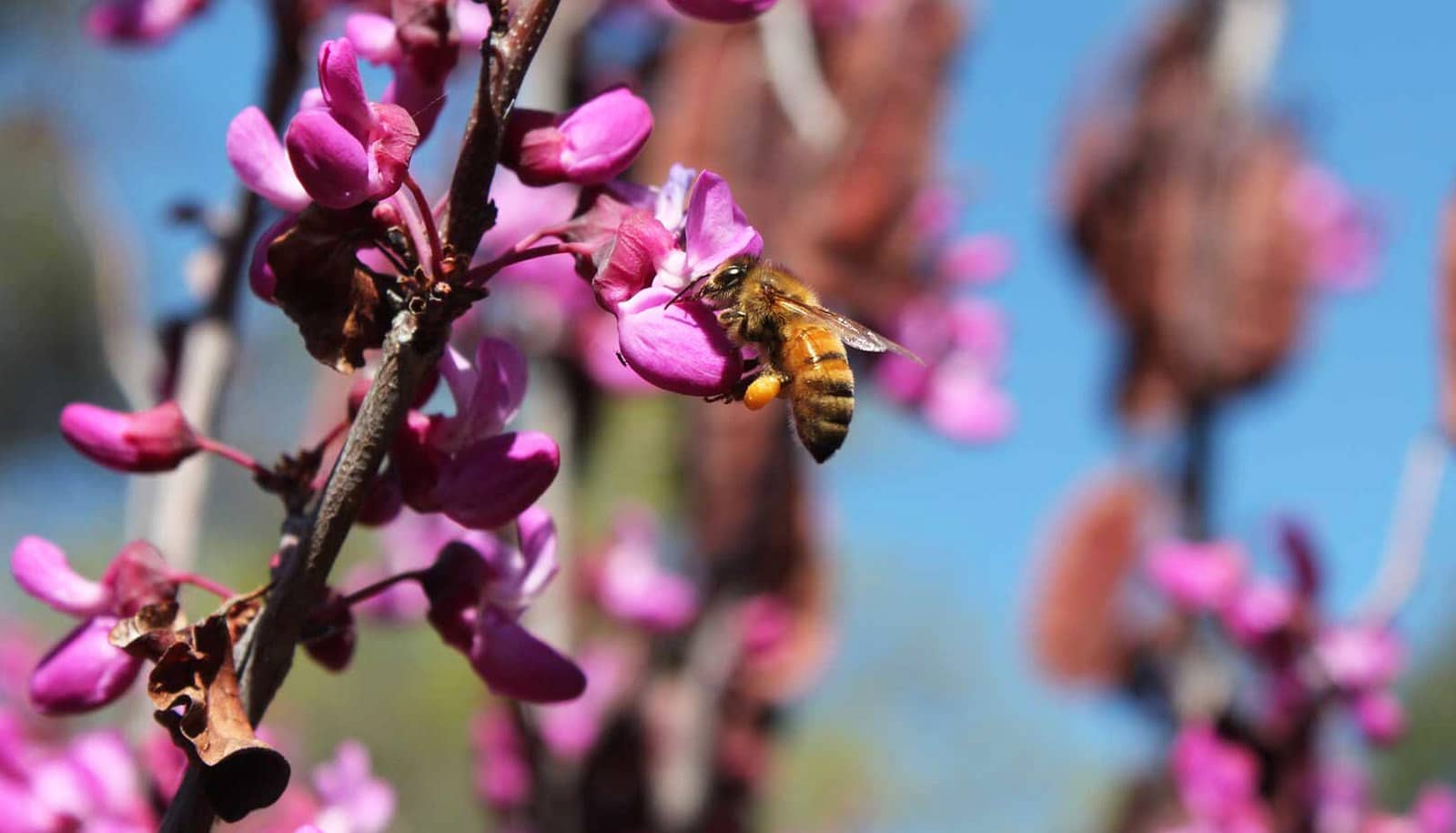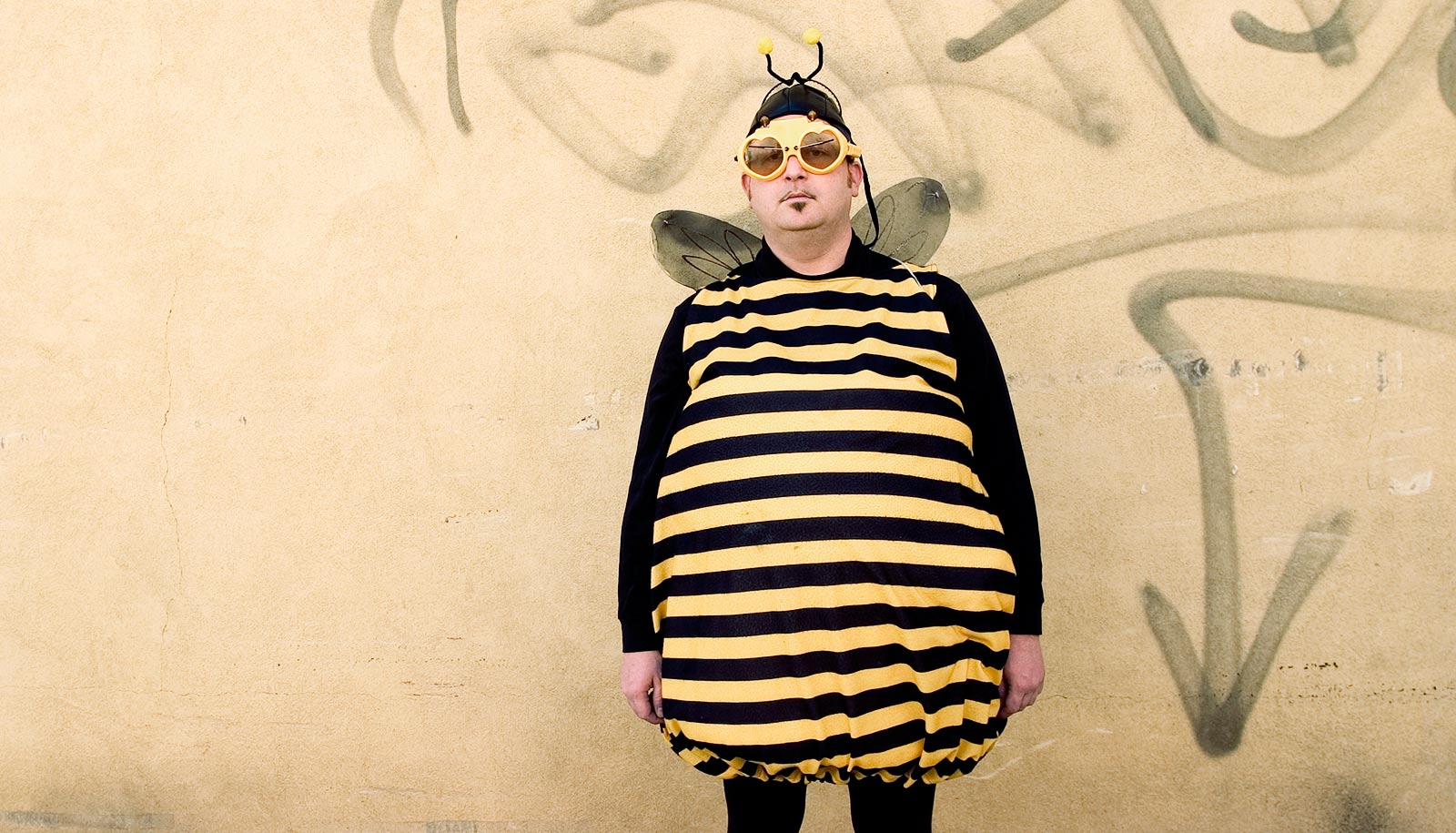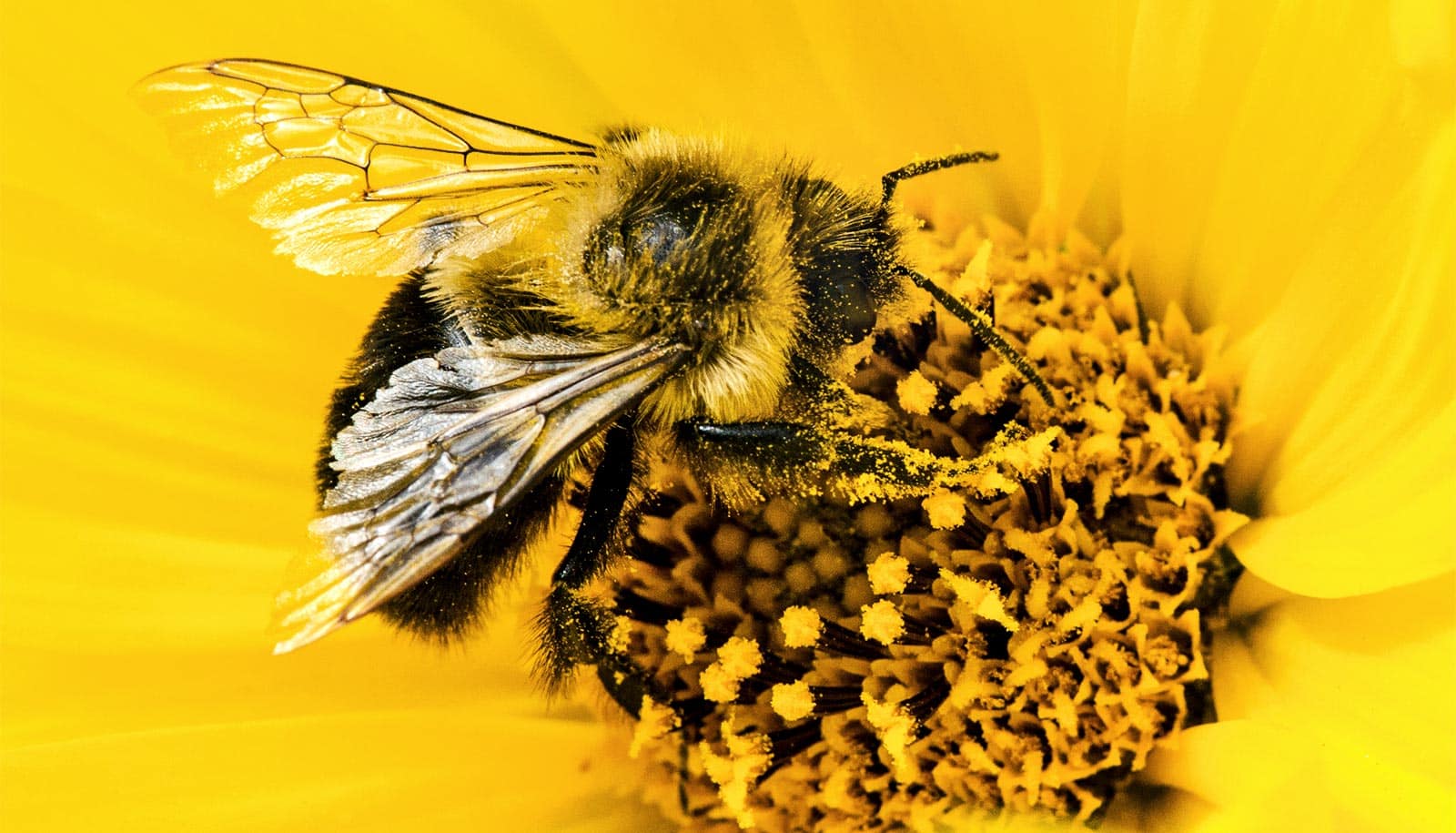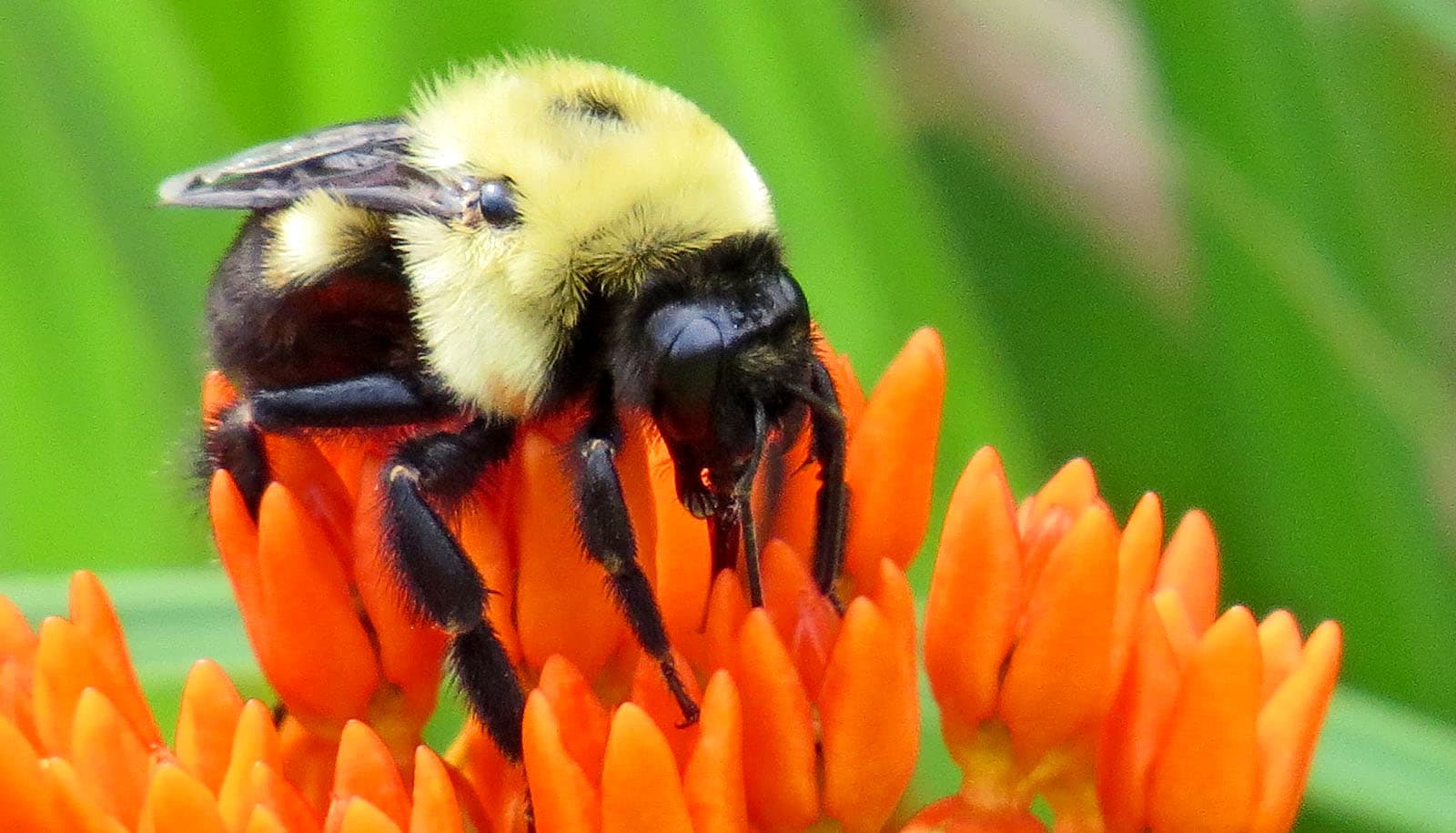Efforts to promote the future health of both wild bees and managed honeybee colonies need to consider specific habitat needs, such as the density of wildflowers, say researchers.
At the same time, improving other habitat measures—such as the amount of natural habitat surrounding croplands—may increase bee diversity while having mixed effects on overall bee health.
The findings are from a new analysis of several thousand Michigan bees from 60 species. The study looks at how the quality and quantity of bee habitat surrounding small farm fields affects the levels of common viral pathogens in bee communities.
“Future land management needs to consider that broadly improving habitat quality to benefit pollinator community diversity may not necessarily also benefit pollinator health,” says University of Michigan biologist Michelle Fearon, lead author of a study in the journal Ecology.
“To promote pollinator health, we need to focus on improving specific habitat quality features that are linked to reducing pathogen prevalence, such as planting greater density of flowers,” says Fearon, a postdoctoral fellow in the ecology and evolutionary biology department.
Pollinators and pathogens
Bees are indispensable pollinators, supporting both agricultural productivity and the diversity of flowering plants worldwide. But in recent decades, both native bees and managed honeybee colonies have seen population declines, which are blamed on multiple interacting factors including habitat loss, parasites, and disease, and pesticide use.
As part of the work for her doctoral dissertation, Fearon and her colleagues netted and trapped more than 4,900 bees at 14 winter squash farms in southeastern Michigan, where both honeybees and wild native bees pollinate the squash flowers.
The bees were analyzed for the presence of three common viral pathogens. Consistently, lower virus levels were strongly linked to greater species richness, or biodiversity, among local bee communities. The number of bee species at each farm ranged from seven to 49.
Biodiversity and the ‘dilution effect’
Those findings, published in February 2021 in Ecology, provided support for what ecologists call the dilution effect. This controversial hypothesis posits that increased biodiversity can decrease, or dilute, infectious disease transmission.
But an unresolved question lingered after that study was published: Was biodiversity truly responsible for the observed reductions in viral levels, or was there something about habitat quality that drove changes in both bee biodiversity and viral pathogen prevalence?
“Many studies have shown that high-biodiversity communities are ones with low rates of infectious disease. But we also know that better habitat quality often leads to greater biodiversity,” says study coauthor Chelsea Wood of the University of Washington.
“So which factor is actually driving down disease risk: biodiversity or habitat? Do high-biodiversity communities dilute disease prevalence? Or do communities in high-quality habitat have healthier hosts, who are better at resisting infection? Our data show that some apparent ‘dilution effects’ could actually have nothing at all to do with biodiversity.”
Previous studies have demonstrated that habitat factors can directly influence both an animal’s nutritional status and the strength of its immune system, which in turn can influence its susceptibility to pathogens. For example, Eurasian red squirrels living in fragmented habitats host greater gastrointestinal parasite burdens than those living in continuous forest habitats.
To get to the root cause of their Michigan bee observations, Fearon and her coauthors generated models allowing them to rigorously disentangle the effects of habitat characteristics on patterns of pathogen prevalence.
They reexamined the previously collected bee data and added new information about local and landscape-level habitat. For the study, the researchers defined high-quality bee habitat as areas that provide sufficient quantity and diversity of floral resources (both pollen and nectar) to sustain good pollinator nutrition.
At the local level, floral richness (meaning flower species diversity) and floral density were the key indicators of high-quality habitat. At the landscape level, proportion of “natural areas” surrounding farm fields and landscape richness (meaning areas with more land cover types) were the key characteristics. Natural areas included deciduous, evergreen, and mixed forest; herbaceous and woody wetland; shrubland; grass pasture; and wildflower meadow.
The researchers found that habitat can have both positive and negative impacts on pathogen levels in bee communities. This is evidence for what the authors called a habitat-disease relationship, where habitat quality has a direct impact on bee health.
In general, a higher proportion of natural area and a greater richness of land cover types were associated with increased viral prevalence, while greater floral density was associated with reduced viral prevalence.
“Areas with greater floral abundance could provide better pollen and nectar resources for bees to help them resist or fight off infection,” says study coauthor Elizabeth Tibbetts, a professor in the University of Michigan’s department of ecology and evolutionary biology. “Additionally, greater floral abundance may reduce the effective foraging density of pollinators and result in reduced pathogen transmission.”
More natural area was also associated with higher bee species diversity, which in turn contributed to reduced, or diluted, viral prevalence.
“Most importantly, we found that greater habitat quality in the surrounding landscape was a key driver of the dilution effect that we previously observed,” Fearon says. “This provides evidence for a habitat-driven biodiversity-disease relationship, where habitat quality indirectly impacts bee health by altering bee species diversity.
“But different habitat-quality metrics impacted patterns of viral prevalence both positively and negatively. This means that habitat quality has the potential to decrease or increase viral prevalence in pollinators depending on the relative strengths of the habitat-disease and biodiversity-disease pathways.
“So, it is important to consider how improving specific habitat quality measures may impact bee diversity and bee health in different ways.”
The latest research had funding from the National Science Foundation, the North American Pollinator Protection Campaign, the Pollinator Partnership, the Garden Club of America, and the University of Michigan’s Rackham Graduate School and department of ecology and evolutionary biology.
Fearon also had support in part from the Dow Chemical Company Foundation through the Dow Sustainability Fellows Program at the University of Michigan’s Graham Sustainability Institute. Wood had support from the Alfred P. Sloan Foundation, the National Science Foundation, a University of Washington Innovation Award, and the UW Royalty Research Fund.
Source: University of Michigan



